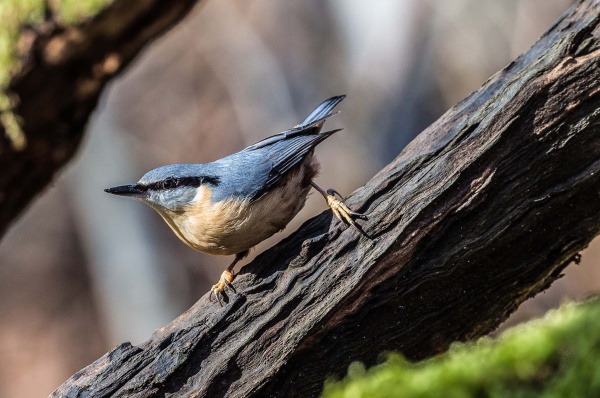Facts About Eurasian nuthatch
The Eurasian nuthatch, also known as the wood nuthatch, is a delightful small bird native to the Palearctic region and Europe. It is easily identifiable by its blue-grey upper body, black eye-stripe, and distinctive calls. These birds favor mature deciduous or mixed woodlands, particularly those with large, old trees ideal for nesting.
Eurasian nuthatches primarily feed on insects such as caterpillars and beetles. In autumn and winter, their diet also includes nuts and seeds.
These birds are monogamous and typically nest in tree cavities, often taking over old woodpecker holes. They usually lay around 6-9 red-speckled white eggs. The young are fed a diet of insects and seeds until they are ready to fledge. One of the nuthatch’s most fascinating behaviors is its unique foraging method; they are often seen descending trees headfirst and storing food throughout the year.
Although they face predators like the Eurasian sparrowhawk and competition for nesting spots from starlings and ring-necked parakeets, the Eurasian nuthatch is thriving. They can also suffer from mites and intestinal worms, but these issues have not significantly impacted their population. The International Union for Conservation of Nature (IUCN) lists them as a species of least concern.
These birds have a broad range, from Great Britain to Japan, and breed in various habitats across Eurasia. The Eurasian nuthatch has even been expanding its range in recent years. Nevertheless, the loss of old woodlands and habitat fragmentation could threaten certain local populations. Despite these potential challenges, the Eurasian nuthatch remains a resilient and widespread species.

 Liechtenstein
Liechtenstein